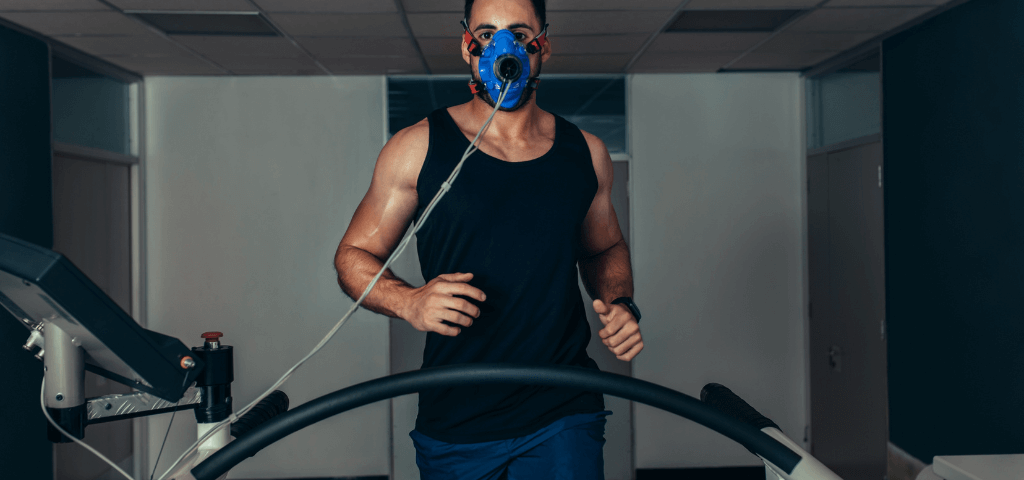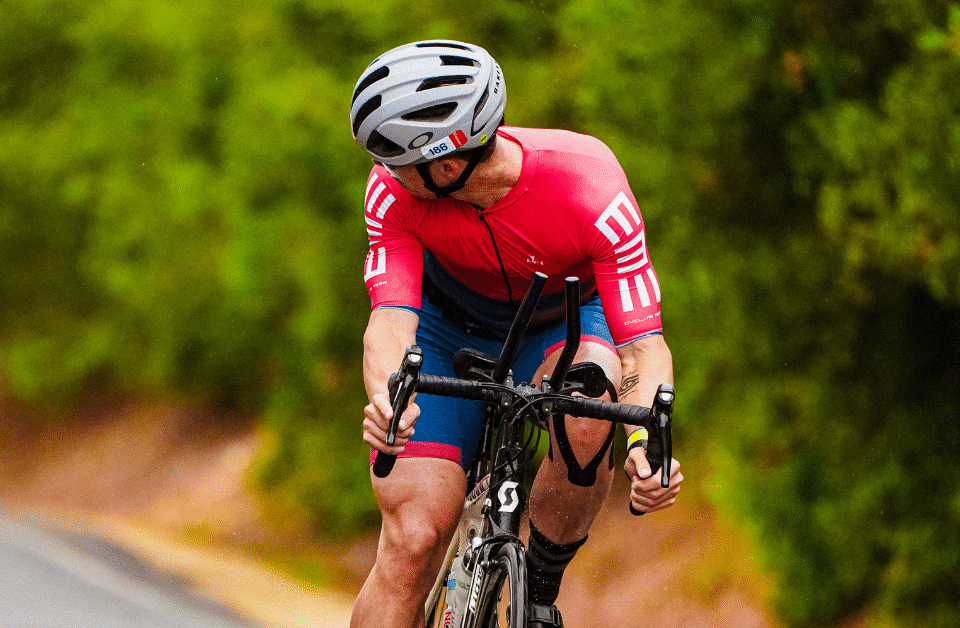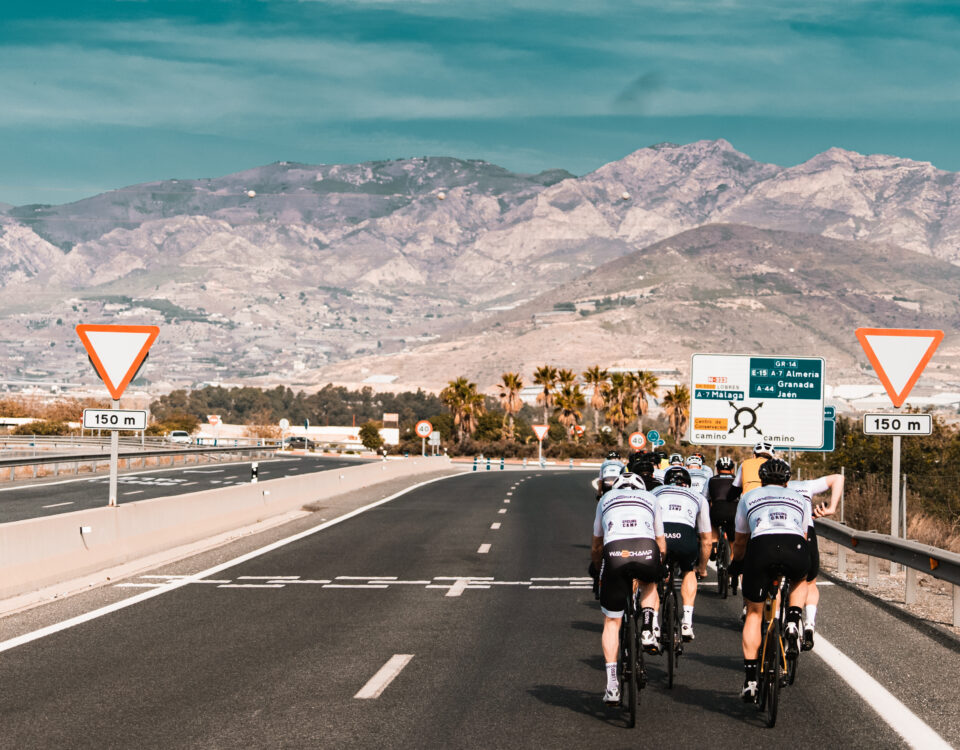
Anaerobic power boost – how short intervals impact your FTP
6 April 2025
Training based on HRV – what is it and how does it work?
7 July 2025
In the world of amateur cycling, we constantly seek ways to improve our performance. We train for hours, invest in better equipment, and analyze every aspect of our ride. Yet often, we lack the most fundamental insight—a deep understanding of how our body actually functions under exertion. This is where INSCYD performance testing steps in—a revolutionary tool once reserved exclusively for World Tour pros, now becoming accessible to ambitious amateurs as well.
What will you find in this article?
- What exactly is INSCYD, and why is it a game-changer?
- Why traditional performance tests are no longer enough?
- INSCYD in practice – how the testing works?
- What exactly does INSCYD tell us? Key parameters explained
- INSCYD in practice – how to use test results in training?
- INSCYD vs traditional performance testing – a practical comparison
- Practical case studies – how INSCYD transforms training?
- Frequently asked questions and concerns about INSCYD testing
- Train smarter, not harder – summary
What exactly is INSCYD, and why is it a game-changer?
INSCYD (Innovative System for Cycling Diagnostics) is an advanced diagnostic system that provides a comprehensive metabolic analysis of the body, going far beyond traditional performance tests. Unlike classic tests that focus mainly on determining lactate threshold and VO2max, INSCYD delivers a complete picture of how your body functions during exercise by analyzing a range of key physiological parameters.
“INSCYD is not just another performance test—it’s a complete system for analysis and interpretation that helps you understand what’s really happening inside a cyclist’s body during exercise,” say experts from the University of Colorado, who reviewed the effectiveness of various performance testing methods (Anderson & Jenkins, 2024).
The core difference between INSCYD and traditional tests lies in the depth of metabolic analysis. While classic endurance testing centers on lactate threshold (FTP) and maximal oxygen uptake (VO2max), INSCYD provides a complete breakdown of your energy metabolism, including:
- Your individual aerobic and anaerobic power profile.
- A detailed analysis of carbohydrate and fat utilization as energy sources.
- Your ability to buffer and tolerate lactate.
- Cycling economy and metabolic efficiency.
- VLamax – the maximum lactate production rate, a key indicator of metabolic type.
- Accurate training thresholds across all intensity zones.
Most importantly, INSCYD doesn’t just measure these parameters—it also shows how they interact and influence your performance in various race scenarios. It’s like switching from black and white to full color when it comes to understanding your body.
Why traditional performance tests are no longer enough?
For years, many cyclists have relied on classic FTP (Functional Threshold Power) tests—whether in the form of a 20-minute effort or a lab-based threshold measurement. While these methods offer some useful insights, they come with limitations. That doesn’t mean they’re obsolete—they’re still widely used. But cyclists who want to truly understand their bodies—especially advanced amateurs and professionals—now turn to INSCYD for deeper insights.
Imagine two riders with the exact same FTP of 300 watts. Traditional thinking would assume their performance capacity is similar and they should train alike. In reality, however, their metabolic profiles could be vastly different. One rider might rely primarily on aerobic metabolism, excelling in sustained endurance efforts but lacking explosive power. The other might have dominant anaerobic capabilities, producing powerful accelerations but struggling with long-distance stamina.
Recent research from the Norwegian University of Science and Technology (2024) found that two cyclists with identical FTPs could have VLamax (maximum lactate production rate) values differing by up to 50%. That’s a critical difference that entirely changes the optimal training approach for each rider.
As one coach put it: “Classic performance tests are like evaluating a car’s engine solely by its peak horsepower—ignoring torque, fuel efficiency, and acceleration profile. INSCYD gives you the full picture—how the engine behaves under real-world conditions.”
INSCYD in practice – how the testing works?
One of INSCYD’s biggest advantages is its practicality and non-invasiveness. Unlike traditional lab tests that require gas analysis equipment and blood sampling, INSCYD testing can be performed in natural outdoor conditions—on your own bike—providing data that’s much closer to what you experience during training or racing.
A standard INSCYD protocol includes 3 key test efforts, typically spread over two training days:
Important note: All test efforts must be performed seated only—not even a second out of the saddle. Standing up distorts power readings due to sudden spikes caused by bodyweight leverage, and the software may interpret this as an error.
FIRST TEST
Effort: 1 x 20-second seated sprint at maximum effort
Warm-up: Minimum 5 minutes in Zone 1. During the last 100 seconds before the sprint, pedal very lightly at 80–140W.
Warning: The algorithm will reject your result if you didn’t rest (pedal easily) for at least 100 seconds before the sprint.
Be aware that around 7–8 seconds in, you may start to seriously struggle. It’s crucial to push as hard as you possibly can for the full 20 seconds.
After the test: Spin easy for 15–20 minutes in Zone 1, cadence around 80–90 rpm.
SECOND TEST
Effort: 1 x 3-minute seated maximum effort at 120–130% FTP (for example, if your FTP is 300W, aim for ~360–390W).
This should feel hard right from the start and become progressively more painful—burning muscles and deep, heavy breathing.
THIRD TEST
Effort: 1 x 12–15-minute seated maximum effort, using a comfortable cadence based on terrain.
This is a sustained effort that starts at about 8/10 difficulty and should finish at 10/10, with strong muscle fatigue and labored breathing.
Data analysis and result interpretation
After the tests are completed, the collected data is uploaded into the advanced INSCYD software, which performs a detailed metabolic analysis. Unlike many other testing methods, INSCYD doesn’t stop at simple measurements—it uses sophisticated mathematical models to interpret the data and build a comprehensive metabolic profile.
The result of this process is a full report that provides not just raw numbers, but practical interpretations and specific training recommendations. Most importantly, the INSCYD report shows how individual parameters influence each other and what role they play in different racing scenarios.
What exactly does INSCYD tell us? Key parameters explained
The INSCYD test report provides a set of parameters that together form a comprehensive picture of your metabolic profile. Let’s take a closer look at the most important ones and what they really say about your cycling performance.
VO2max – maximal oxygen uptake
VO2max is the classic measure indicating the maximum amount of oxygen the body can use during intense exercise, expressed in milliliters per kilogram of body weight per minute (ml/kg/min). While this is a standard in most performance tests, INSCYD delivers it with exceptional precision—without the need for an uncomfortable breathing mask.
VO2max is considered one of the most important indicators of endurance potential. For the average sedentary person, it’s around 35–40 ml/kg/min. Well-trained amateur cyclists range from 55–65 ml/kg/min, while World Tour pros can exceed 80 ml/kg/min.
Interestingly, studies show VO2max is largely genetically determined, and its potential for improvement through training is limited (typically by 10–20% from baseline). That’s why understanding other parameters—ones we can improve much more through targeted training—is crucial.
VLamax – maximal lactate production rate
VLamax is one of the most important parameters provided by INSCYD, often overlooked in amateur training. It represents the maximal rate at which the body produces lactate during intense effort, expressed in mmol/l/s.
This metric is key to defining your rider profile. A high VLamax (above 0.8 mmol/l/s) indicates dominant anaerobic metabolism and suits you for sprints, short climbs, or attacks. A low VLamax (below 0.5 mmol/l/s) suggests strong aerobic dominance—ideal for time trials, long climbs, and stage races.
Most importantly, VLamax directly influences how effectively you can use your VO2max during long efforts. The higher your VLamax, the harder it is to sustain your aerobic potential over time.
“It’s like having a powerful engine that burns too much fuel—you can’t run it at full power for long,” explains one INSCYD-trained coach.
Substrate utilization profile
INSCYD offers a detailed analysis of how your body uses different energy sources (carbohydrates and fats) across various intensities. This is vital for planning nutrition strategies and metabolic training.
Every cyclist has a unique metabolic fingerprint showing how efficiently they burn fat and carbs. Some can use fats effectively even at 75–80% FTP—ideal for endurance events. Others switch to carbohydrate metabolism as early as 60–65% FTP, which can lead to early glycogen depletion.
“Knowing your fuel usage profile is like having a fuel consumption map for your engine. It allows you to plan when and how much carbohydrate to take in during a ride to avoid ‘bonking,” says a sports nutritionist working with INSCYD data.
Cycling economy and metabolic efficiency
Another fascinating INSCYD metric is cycling economy, showing how much energy (measured in oxygen consumption) is needed to generate a given power output. It’s a critical factor for performance, regardless of max power or VO2max.
Two riders with the same VO2max can have very different cycling economies. The more efficient rider can produce more watts with the same oxygen—an advantage especially in long races.
The good news? Cycling economy can be significantly improved through focused training, optimized bike fit, and mental preparation. “We often see 5–10% gains in economy within months, which translates to 15–25 watt FTP gains without any increase in VO2max,” one INSCYD coach notes.
Lactate tolerance and buffering capacity
INSCYD also measures how well your body handles lactate—a byproduct of intense exertion. Your ability to tolerate and buffer lactate is crucial for maintaining high intensity during long efforts, like climbs or final race attacks.
Studies show that even among equally trained cyclists, lactate handling can vary significantly. Some athletes can efficiently shuttle and reuse lactate as fuel, while others struggle to clear it.
“This is one of those things that’s hard to guess or see with the naked eye. Two riders might have the same lactate threshold, but one can hold 110% FTP for 10 minutes, and the other cracks at 5,” explains a performance physiologist.
Training thresholds and intensity zones
INSCYD uses your entire metabolic profile to define precise training thresholds, far more accurate than traditional FTP- or heart rate-based percentages. This enables optimal training intensity tailored to your physiology.
Conventional zones based on FTP (e.g. Zone 2: 56–75% FTP) are imprecise and don’t account for individual variation. INSCYD delivers personalized zones for each energy system.
“It’s like switching from off-the-rack clothes to a custom-made suit. INSCYD zones are tailored to your physiology, allowing for maximum training benefits with reduced risk of overtraining,” says a coach using INSCYD with amateur athletes.
INSCYD in practice – how to use test results in training?
Having detailed data is just the beginning. The true value of INSCYD testing lies in how you apply this information to optimize your training. Here’s how INSCYD results can shape the training strategy for different types of cyclists.
Scenario 1: Cyclist with high VO2max and high VLamax
This profile is typical of riders with strong aerobic and anaerobic abilities. They can produce high power in sprints and attacks, but struggle to maintain intensity over longer periods—they “burn out” quickly.
For these riders, INSCYD usually suggests lowering VLamax while maintaining high VO2max. This means focusing more on long, moderate-intensity rides and limiting short, high-intensity efforts.
Recommendations might include:
- 2–3 long rides per week (3+ hours) in low zone 2 (60–70% FTP).
- Regular sweet spot sessions (88–93% FTP) of 2–3 x 15–20 minutes.
- Limiting traditional high-intensity intervals.
- Low cadence climbing sessions (60–70 rpm) to target slow-twitch fibers.
“For cyclists with high VLamax, every super-intense session continues to stimulate anaerobic capacity, which is already well developed. It’s like pouring water into an already full bucket,” explains an INSCYD-based coach.
Scenario 2: Cyclist with moderate VO2max and low VLamax
This profile is common among time trialists and long-climb specialists. These riders can sustain relatively high power for long periods but lack explosive power.
INSCYD analysis typically recommends developing anaerobic and peak power while preserving low VLamax. This requires careful balance.
A training plan might include:
- Short, very intense intervals (e.g. 6–10 x 30s all-out with long recoveries).
- Strength training on the bike (low-cadence sprints, uphill efforts).
- Max power sprint sessions (5–10s sprints with full recovery).
- Maintaining endurance base with regular low-intensity long rides.
“It’s a delicate balance—we want to build short-term power without increasing VLamax, which could compromise threshold endurance. It’s like trying to boost top speed without burning more fuel,” says a sports physiologist.
Scenario 3: Cyclist with limited VO2max and high efficiency
This profile is often seen in regular amateur cyclists with limited genetic VO2max potential but excellent riding economy—they use available oxygen efficiently.
INSCYD typically recommends maximizing efficiency and substrate utilization. A training plan might include:
- Aerobic power training (85–100% FTP).
- Polarized sessions (mix of very low and very high intensity).
- Low glycogen training (e.g. fasted rides or after glycogen-depleting sessions).
- Pedaling technique and bike fit work.
“With VO2max limitations, the goal is efficiency. It’s like having a smaller engine, but finely tuned for fuel use and aerodynamics,” one coach explains.
Scenario 4: Cyclist with high VO2max and poor efficiency
This profile fits genetically gifted athletes with suboptimal biomechanics or riding posture. They have great potential that isn’t fully realized.
INSCYD usually indicates the need to improve economy and metabolic efficiency. A plan might include:
- Rhythm-focused sessions (smooth, even pedaling).
- Controlled cadence training (very low and very high cadence work).
- Bike fit and pedaling biomechanics optimization.
- Core strength and stability training.
“It’s like having a powerful engine in a car with poor aerodynamics and a bad transmission. The potential is huge—but needs optimization,” notes a biomechanic working with INSCYD.
INSCYD vs traditional performance testing – a practical comparison
To better understand the value INSCYD testing brings to cycling training, it’s helpful to compare it directly with traditional performance tests. Below are the key differences that significantly impact training effectiveness:
Depth of metabolic analysis
Traditional FTP/VO2max testing: Focuses mainly on determining threshold power and maximum oxygen uptake. It provides basic information about aerobic capacity but lacks a complete picture of energy metabolism.
INSCYD: Offers a comprehensive analysis of all energy systems, including a detailed profile of carbohydrate and fat utilization, lactate buffering capacity, and metabolic efficiency. It gives a full overview of energy metabolism across various effort intensities.
“It’s like comparing a basic blood test to a full diagnostic health check using the latest medical technology,” explains a sports physiologist.
Targeted training capabilities
Traditional FTP/VO2max testing: Allows for basic training guidance based on heart rate or power zones. However, these zones are usually determined using generic formulas that don’t reflect individual metabolic differences.
INSCYD: Enables precise targeting of specific physiological systems and training adaptations most relevant to the rider’s profile and goals. It provides personalized training zones based on the athlete’s actual metabolic profile—not on generic norms.
“Traditional tests are like saying ‘eat more vegetables to be healthy.’ INSCYD is like a personalized nutrition plan based on your deficiencies, preferences, and health goals,” compares a sports dietitian.
Accuracy in identifying strengths and weaknesses
Traditional FTP/VO2max testing: Gives a general picture of fitness, but doesn’t allow for detailed identification of specific metabolic strengths and weaknesses. Two riders with the same FTP can have very different metabolic profiles.
INSCYD: Offers a precise breakdown of all elements of energy metabolism, helping pinpoint the exact areas that need improvement. It shows not only your current state, but your development potential in different domains.
“It’s like a car diagnostic that just says ‘something’s wrong with the engine’ versus a full computer scan that tells you exactly which component needs adjustment and how it affects performance,” says a coach who’s also a mechanic.
Value over time
Traditional FTP/VO2max testing: Provides a static snapshot of your current fitness. After a few months, another test is required, and again it only gives limited data.
INSCYD: Offers insight into both your current condition and the best directions for progress. Follow-up tests reveal not just changes in basic metrics, but also how your entire metabolic profile evolves in response to training.
“A traditional test is like a photo showing where you are. INSCYD is like a GPS that not only shows your current location but also suggests the best route to your destination,” explains a coach.
Practical case studies – how INSCYD transforms training?
To better understand the practical application of INSCYD testing, let’s look at real-life examples of amateur cyclists who used the insights from the test to transform their training and achieve better results.
Case 1: John, 42 years old, amateur cyclist with 4 years of experience
Starting point: John, a middle manager, trained regularly for 8–10 hours per week. He had a decent FTP of 280W (3.7 W/kg) but always struggled with longer climbs and races lasting over 3 hours. He performed well in shorter, high-intensity races.
INSCYD results:
- VO2max: 58 ml/kg/min (good level).
- VLamax: 0.8 mmol/l/s (quite high).
- Poor fat utilization above 65% FTP.
- Good lactate tolerance during short, intense efforts.
Training recommendations:
- Increase volume of low-intensity rides (55–70% FTP).
- Introduce glycogen-depleted sessions (fasted training).
- Limit high-intensity sessions to once per week.
- Include long intervals (15–20 min) at 85–90% FTP.
Results after 6 months:
- FTP increased to 305W (4.0 W/kg).
- VLamax decreased to 0.65 mmol/l/s.
- Significant improvement in fat oxidation (up to 75% FTP).
- Noticeable endurance gains on long climbs and distances.
“The key discovery was that my natural tendencies and past training favored anaerobic development at the cost of aerobic endurance. After shifting focus to reduce VLamax, my long-distance performance improved dramatically—without sacrificing short-term power,” says John.
Case 2: Ana, 35 years old, amateur cyclist with 6 years of experience
Starting point: Ana, a doctor, trained systematically for 10–12 hours a week. She had a solid FTP of 240W (4.0 W/kg) and performed well in long races but lacked punch in finishes and short, steep climbs.
INSCYD results:
- VO2max: 62 ml/kg/min (very good).
- VLamax: 0.4 mmol/l/s (low).
- Excellent fat utilization.
- Limited anaerobic power output.
Training recommendations:
- Maintain strong aerobic base.
- Add strength-focused rides (low cadence work).
- Include specific anaerobic efforts (5–15s max sprints).
- Add plyometric training off the bike.
Results after 5 months:
- FTP slightly increased to 248W (4.1 W/kg).
- VLamax increased to 0.5 mmol/l/s (still relatively low).
- 30-second power increased by over 15%.
- Big improvements in sprint finishes and punchy segments.
“The INSCYD test confirmed what I always suspected—I’m a natural endurance rider with limited sprinting ability. By targeting anaerobic power development, I kept my strengths intact and significantly improved my weaknesses. Now I’m a much more versatile rider,” Aana shares.
Frequently asked questions and concerns about INSCYD testing
Is INSCYD only for professionals?
Absolutely not! While INSCYD was originally developed for professional cyclists, its value for ambitious amateurs is just as great—if not greater in some cases. Pros have access to teams of coaches, physiologists, and specialists to optimize their training. Amateurs, on the other hand, often train alone or with limited guidance, so the precise insights from INSCYD can make an even bigger difference.
“Paradoxically, it’s the amateur juggling training with work and family life who benefits most from the maximum optimization that INSCYD provides,” notes one coach.
Is the INSCYD test invasive or painful?
The INSCYD test requires small blood samples from the fingertip to measure lactate levels. It’s minimally invasive, comparable to a glucose test for diabetics. The prick is done with an automatic lancet and is only mildly noticeable.
The test itself is physically demanding—especially the final phases at maximal effort—but this is no different from other performance tests. It is always conducted under the supervision of trained professionals to ensure safety and comfort.
Are INSCYD results reliable for amateur cyclists?
Absolutely. INSCYD has been scientifically validated for both elite and amateur athletes. Comparative studies show a strong correlation between INSCYD data and results from more expensive lab-based testing methods (e.g., respiratory gas analysis, direct lactate measurement).
“The accuracy difference between INSCYD and a full lab-based test is minimal, with similar practical benefits,” says a sports physiologist.
Do I need my own power meter for an INSCYD test?
While owning a power meter is highly useful for applying the training recommendations that follow an INSCYD test, the test itself can be done using a calibrated power meter provided by the testing center.
“To truly follow INSCYD’s training advice, your own power meter is practically essential. It’s like trying to follow a diet without a scale—you can try, but your precision will suffer,” a coach explains.
How do I tell the difference between a real INSCYD test and a basic test?
Due to the growing popularity of metabolic testing, some services may appear similar to INSCYD but don’t offer the same depth.
A true INSCYD test includes:
- A comprehensive pre-test questionnaire
- Anthropometric measurements
- A progressive lactate-measured performance test
- A maximum anaerobic power test
- A detailed report including all key metrics (VO2max, VLamax, substrate usage profile, etc.)
- Individualized training recommendations based on your data
“It’s worth asking if the provider is licensed by INSCYD and what experience they have with the protocol. Certified INSCYD testers undergo specific training and accreditation,” advises one certified INSCYD coach.
Train smarter, not harder – summary
INSCYD performance testing represents a new era in cycling training, where precise analysis replaces guesswork and trial-and-error methods. In a world where most amateur cyclists have limited time for training, the ability to optimize every hour spent on the bike is priceless.
Here are the key benefits INSCYD offers to amateur cyclists
1. Unmatched training personalization
INSCYD ends the era of generic training plans and average-based advice. Each cyclist receives an individual metabolic profile and precise recommendations on how to train to develop strengths and address weaknesses.
“It’s like switching from off-the-rack clothing to a tailored suit. Both serve the same function, but the fit is worlds apart,” says one coach.
2. Maximum training efficiency
For most amateurs, time is the most limited resource. INSCYD ensures that every training minute is focused on developing the aspects of fitness that matter most to your personal goals.
“Before INSCYD, I was training 12 hours a week and pushing for more. After optimizing based on my results, I get better outcomes training just 8–9 hours,” shares one cyclist.
3. Reduced risk of overtraining and injury
Precisely defined training zones and an understanding of how your body handles various workloads help minimize the risk of burnout and injuries—especially important for amateurs juggling training with work and family.
“Overtraining is the amateur’s biggest enemy. When your income depends on your job—not your race results—you can’t afford weeks of low performance or downtime,” notes a physiologist.
4. Deep understanding of your own body
Perhaps the most valuable benefit: INSCYD helps you truly understand your body—how it responds to training, how it uses different fuels, and what your natural tendencies are.
“It’s like receiving a detailed user manual for your body. Instead of guessing, you know exactly what works for you,” concludes one rider.
Why it’s worth investing in INSCYD testing?
In the world of amateur cycling, where spending tens of thousands of euros on gear is commonplace, investing in advanced performance diagnostics may seem like a big expense. Yet from the perspective of training efficiency and potential performance gains, it’s one of the most cost-effective investments you can make.
“People don’t hesitate to spend 10–15k euros on carbon wheels that might save them 30 seconds in a 40 km time trial. Meanwhile, for a fraction of that, they could get INSCYD testing—which has the potential to improve results by minutes, not seconds,” notes Sebastian Weber, creator of INSCYD.
INSCYD testing isn’t just a one-time data point—it’s the beginning of a transformation in how you train. It’s an investment in deep understanding of your body and unlocking the full potential within it.
“Each of us has a unique metabolism, a unique set of strengths and limitations. INSCYD helps identify and leverage these unique traits, instead of blindly following generic training plans,” says a sports physiologist.
If you’re serious about developing your cycling potential, INSCYD isn’t a luxury—it’s a fundamental tool that will help you train smarter, not harder, and achieve results you may not have thought possible.
Thinking about cycling training? If you want to take your riding to the next level, we have a great option for you:
- Individual coaching – work one-on-one with an experienced coach who will continuously adjust your training load to your needs and support your development as a cyclist.
Bibliography
- Anderson, L., & Jenkins, D. G. (2024). “Metabolic Profiling in Cycling: A Comparative Analysis of Testing Methods.” Journal of Sports Sciences, 42(3), 245-259.
- Seiler, S., & Tonnessen, E. (2023). “Precision Training Based on Metabolic Profiling: From Elite to Amateur Athletes.” International Journal of Sports Physiology and Performance, 18(2), 156-170.
- Weber, S., & Maier, T. (2024). “INSCYD Testing Protocol: Validation and Practical Applications in Cycling Training.” Sports Medicine, 54(1), 45-60.
- Rodriguez-Marroyo, J. A., & Garcia-Lopez, J. (2023). “Impact of VLamax on Cycling Performance: A Review of Current Evidence.” Human Movement

